Germainia grandiflora
(S.T.Blake) Chai-Anan
This grass is an erect tufted perennial between 30-100 cm tall. The often long leaf blades are held upright and are between 7-30 cm long and 2-5 mm wide (Fig. 1a & b). The basic flowering units or spikelets are arranged along a spike like branch (raceme), with usually two or more branches clustered in one flowering head. The branches of the flowering head are arranged digitately (arising from the same point), however, these are not always obvious as they are usually pressed together and appear as one united spike (Fig. 2). The flowering head is usually well exserted from the leaves. The spikelets are arranged along the branches in pairs, one large stalkless (sessile) spikelet and one smaller pedicelled spikelet (Figs. 3a & b). The pedicelled spikelet contains a floret which is conspicuously awned, the awn (or bristle) is 25-53 mm long, hairy, twisted and held erect. When mature the inflorescence is light brown or tan in colour. The lower glume of the sessile spikelet is oblong or obovate (broader above the middle) in shape and is the more prominent surface of the flowering head. The apex of the sessile spikelet is somewhat blunt, rounded, ragged or toothed at the tip, however, the apex of the pedicelled spikelet which is held behind the sessile spikelet is exserted and visible past the top of the sessile spikelet as a narrow brown acute point (Fig. 3).
Botanical Description
A perennial grass with culms up to 30-100 cm high (Fig. 1). The leaves are cauline, with leaf blades held erect, from 7-30 cm long and 2-5 mm wide, and a leaf surface more or less rough to the touch. The leaf sheath is glabrous. The inflorescence is comprised of one or more spike like branches or racemes digitately arranged (i.e. like the fingers of a hand), but often obscurely so with the branches held erect and pressed together to appear like a single axis, each branch between 3.5-7 cm long (Fig. 2). The spikelets occur in pairs, each pair consists of a prominent sessile spikelet (male) and a more or less concealed pedicelled spikelet (female) (Figs. 3a & b). At the base of some branches some of the sessile spikelets are sterile and empty of florets and form an involucre or whorl at the base of the raceme. The sessile spikelets are 6.5-12 mm long, the pedicelled spikelet are usually smaller and are conspicuously awned, the awn is hairy, 25-53 mm long, twisted and held erect.
Diagnostic Features
When flowering this species can be identified by: the quite large broad glumes of the sessile spikelet (Fig. 3), the branches of the digitate inflorescence held erect and pressed together, the long twisted awn and the tan to light brown colouring of the mature spikelets. Other species with which it may be confused are Germainia truncatiglumis, Eulalia aurea and species of Ischaemum. From G. truncatiglumis it can be distinguished by the size of the lower glume of the sessile spikelet and the awn. According to the key in Simon & Alfonso (2011) the glume is 3-4.5 mm long in G. truncatiglumis compared to more than 6 mm in G. grandiflora, and the awn is up to 2.5 cm long in G. truncatiglumis compared to more than 2.5 cm long in G. grandiflora. Eulalia aurea and Ischaemum species from the region can also be distinguished by their smaller sessile spikelets. In addition, Eulalia is characterised by an inflorescence covered in brown hairs (Fig. 4), while Ischaemum species (Fig. 5) carry their awns on the sessile spikelet not the pedicelled spikelet as in Germainia. In most species of Ischaemum both the pedicelled and sessile spikelets are visible, often side by side (Fig. 5), whereas the pedicelled spikelet Germainia grandiflora is obscured by the sessile spikelet (Fig. 3).
Habitat
In Australia this species is found in Cape York Peninsula, and the Top End of the Northern Territory including a few collections recorded from the Gulf of Carpentaria in the Northern Territory. Usually grows in sandy soil in wet areas in Eucalyptus and Melaleuca savannas.
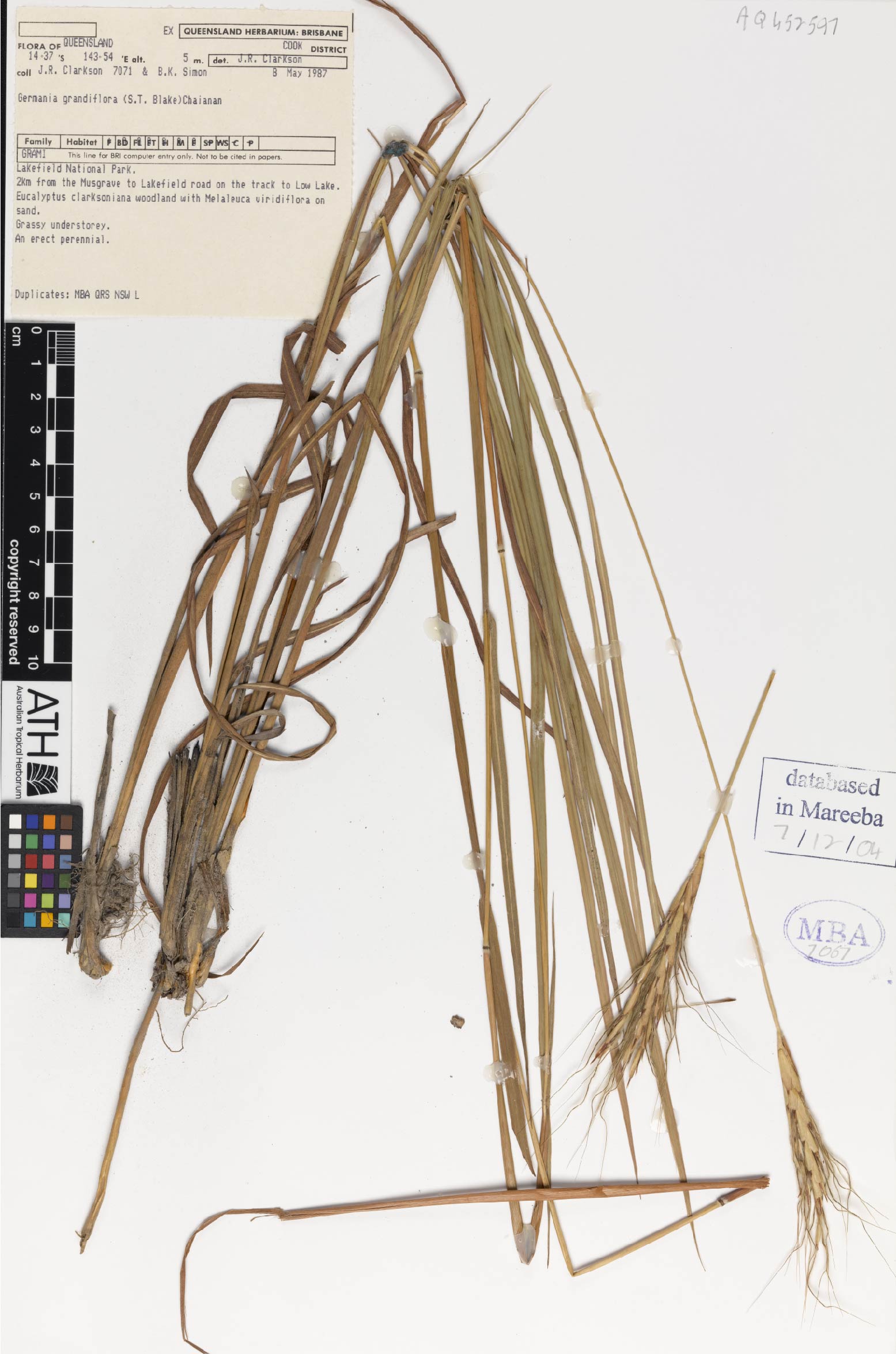
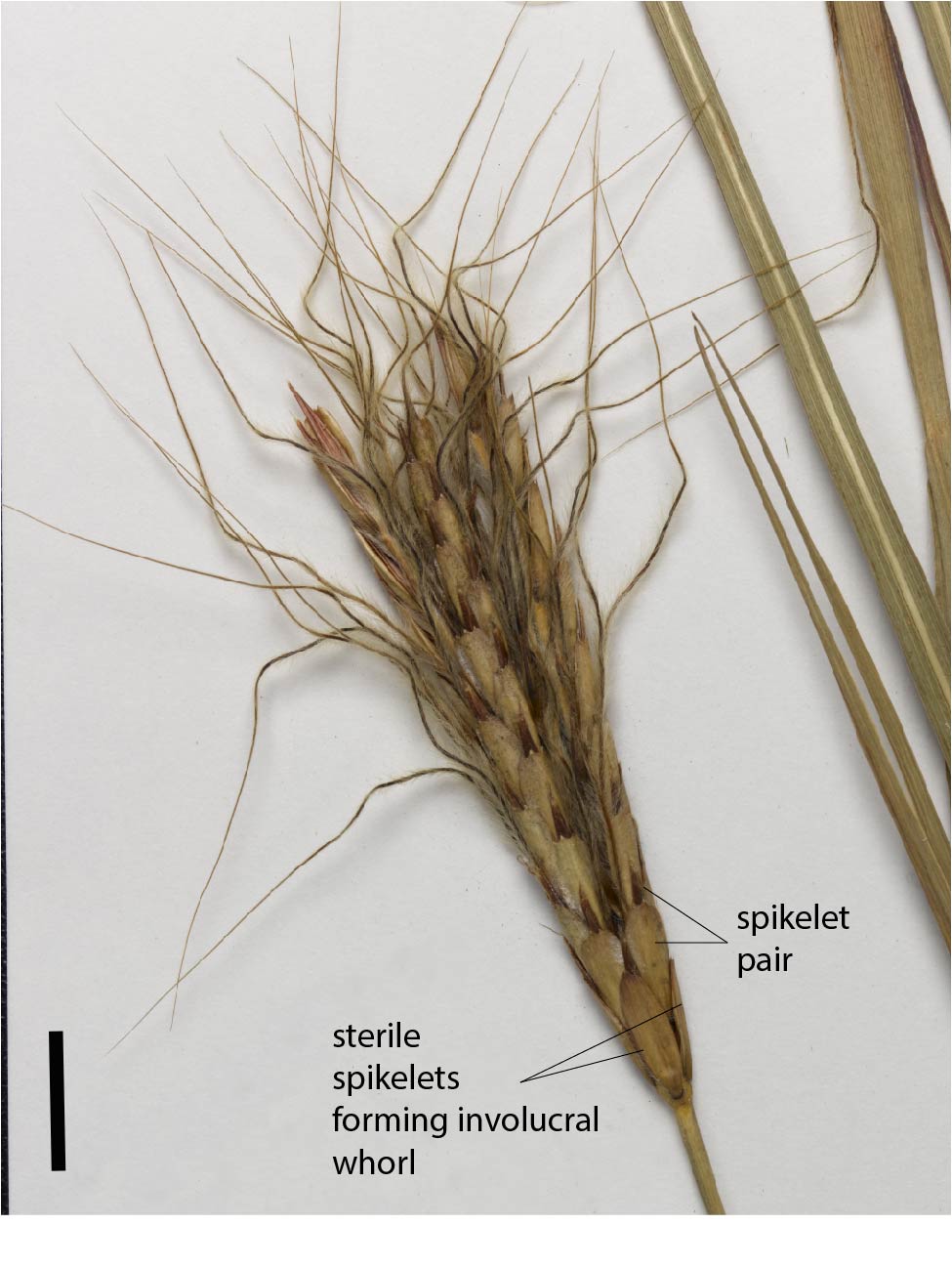
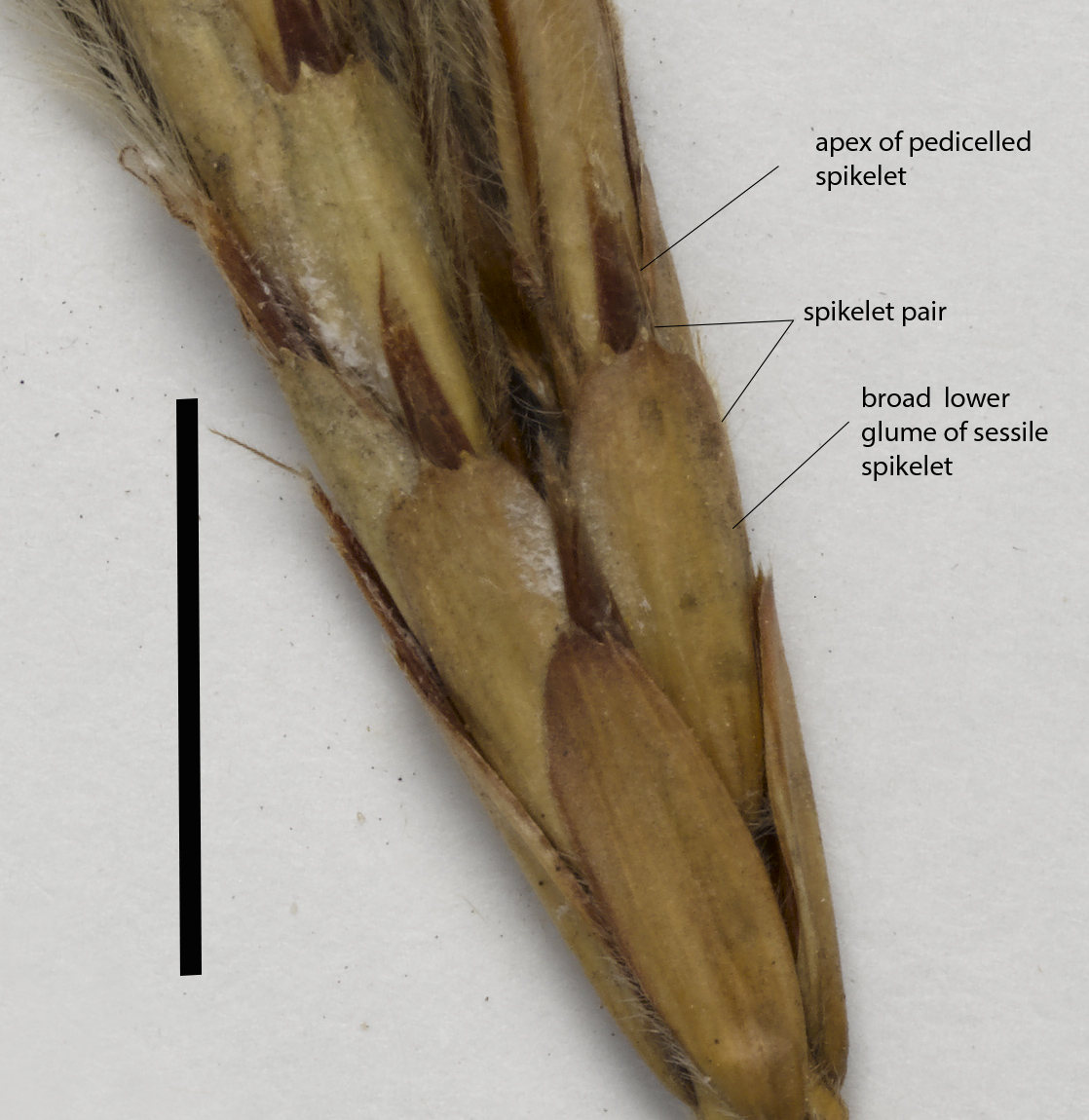
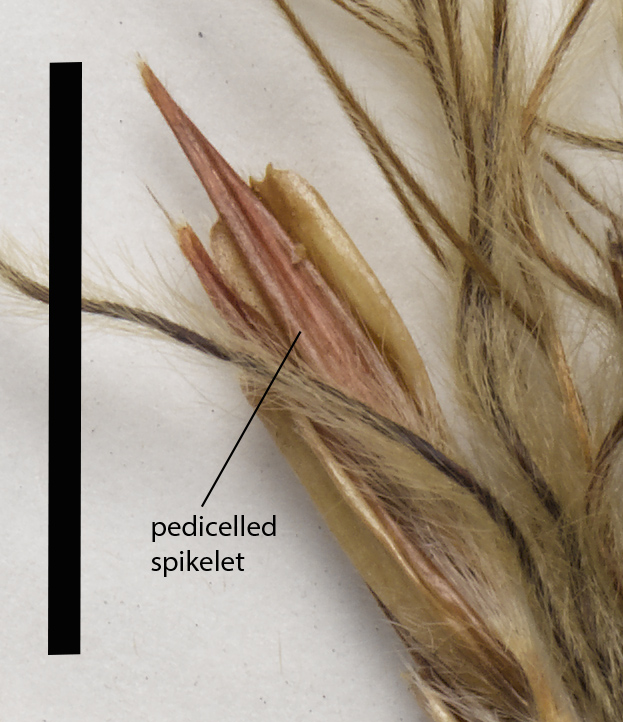
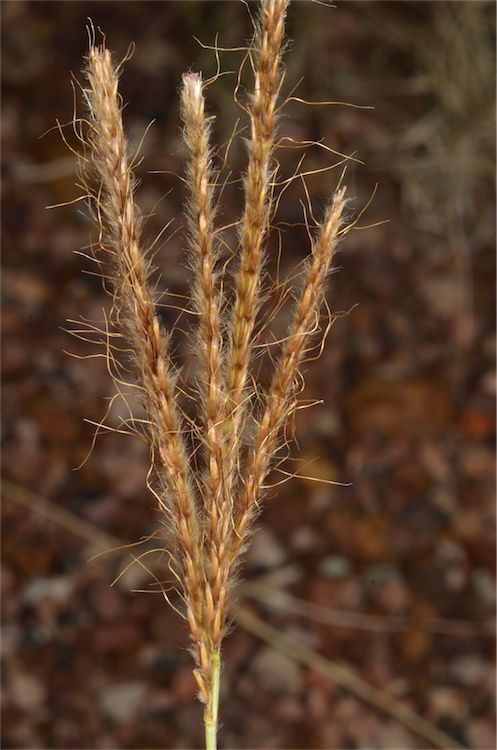

Resources
AVH (2017) Australia’s Virtual Herbarium, Council of Heads of Australasian Herbaria, <http://avh.chah.org.au>, accessed 30 May 2017.
Simon, B.K. & Alfonso, Y. (2011) AusGrass2, http://ausgrass2.myspecies.info/ accessed on [date 29 March 2017].

